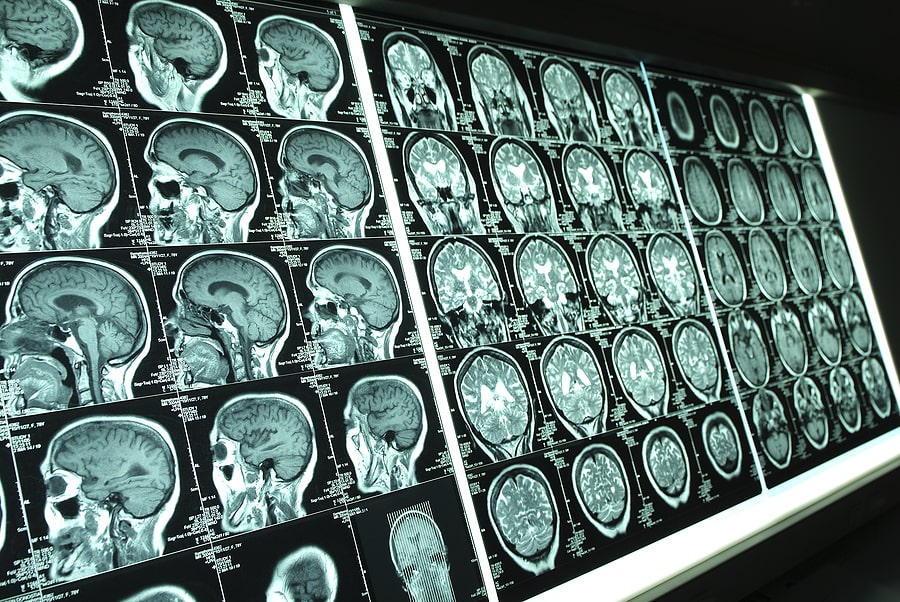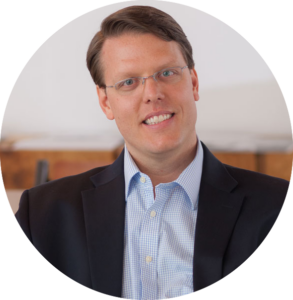
The brain stem is arguably the body’s most critical area. It connects the brain to the spinal cord, allowing complex signals to travel from the brain throughout the body. Additionally, the brain stem controls critical life-sustaining functions such as breathing, heartbeat, and swallowing. Serious brain stem injuries often result in paralysis, comas, or death.
Acquired brain stem trauma most often occurs after car crashes, pedestrian-motor vehicle collisions, recreation sporting accidents, assaults, construction incidents, and falls. Brain injury attorneys may help patients and caregivers understand their financial recovery and medical rights following life-altering brain stem injuries.
Location and Function of the Brain Stem
The brain stem sits at the base of the head and extends into the central brain tissues. It consists of three sub-parts: The pons area (metencephalon), the midbrain (mesencephalon), and the medulla oblongata (myelencephalon). Each area controls certain vital functions, and as such, the section damaged generally determines the associated symptoms and the patient’s prognosis.
The Pons Area
The pons acts as the bridge between most brain areas. It links the two cerebral hemispheres and remaining lobes to the medulla oblongata and spinal cord. Without the pons area, signals cannot travel from the brain to the rest of the body.
The pons primarily controls:
- Breathing
- Arousal
- Fine motor skills
- Balance
- Muscle tone
- Sleep cycles
- Sensory processing
- Facial movement
Nearly all essential cranial nerves sit in the pons, meaning it receives and processes signals from your organs and senses. Damage to the pons usually impacts eye movement, smell, taste, hearing, and muscle response. Without proper signal processing, the brain cannot absorb and respond to essential environmental stimuli. Severe damage to the pons area of the brain stem generally results in a coma or death.
In rare cases, pons injuries cause locked-in syndrome. This condition results in quadriplegia, including the loss of all voluntary muscle movement except eye movement. However, locked-in patients frequently retain consciences and cognitive function. They can generally understand and respond to loved ones and medical staff via eye movements.
Early medical intervention and intensive therapy may help some patients recover limited physical functions, but most locked-in patients require 24/7 care. It’s essential to seek legal help in such cases, as patients and families often require assistance navigating the insurance claims and long-term care process.
The Midbrain
The midbrain sits above the pons area, directly in the brain’s center. It connects the other portions of the brain to the brain stem and, in turn, connects the two parts of the central nervous system (CNS).
The midbrain also controls eye movement, motor function, and auto/visual processing. Research suggests it also mitigates and manages pain. Mild midbrain damage generally results in vision and hearing difficulties, possible memory loss, and movement difficulties. Unfortunately, severe midbrain damage causes brain death.
The midbrain also houses a small but important area called the hypothalamus.
- Sex drive
- Hormone release
- Body temperature regulation
- Mood
- Heart rate
- Sleep
- Hunger/thirst
Hypothalamic injuries often result in extreme weight loss/gain, kidney dysfunction (diabetes insipidus), low heart rate, and circulatory difficulties. Certain medications may replace or supplement hormone dysfunction, but direct trauma to the hypothalamus can damage the receptors impacted by these medications.
The Medulla Oblongata
The medulla oblongata (medulla) likely comes to mind when you think of the brain stem. The medulla oblongata extends from the brain’s base to the top of the spinal column. It’s the primary connector between the brain and spinal cord, which transmits brain signals to the body. It also controls automatic bodily functions such as breathing and heartbeat. Even patients with severe traumatic brain injuries can survive in a comatose state when the medulla remains undamaged. Serious medulla oblongata injuries generally result in immediate brain death.
Diffuse axonal injuries (DAI) often affect the medulla. DAIs most often occur after high-speed car accidents when the occupant’s head suddenly snaps forward and then backward during the crash. This crash force tears essential nerve fibers in the brain stem, immediately cutting off signals between the brain and body. DAIs can prevent the medulla from telling the heart to beat, resulting in death, or force patients into a minimum conscious condition (vegetative state or coma).
Primary Causes of Brain Stem Injuries
Brain stem damage constitutes a serious traumatic brain injury (TBI). However, many accident-related TBIs do not involve brain stem damage. The brain stem’s centralized location often protects it from direct trauma after mild brain injuries. For example, low-speed car accidents and slip-and-falls may result in concussions that do not generally cause brain stem damage.
Instead, brain stem injuries most commonly occur after:
- Strokes – Blood clots from legs or other arteries often travel through the brain stem’s major vessels, cutting off blood supply to the pons and midbrain areas. However, sudden trauma can also cause strokes if the force damages the brain stem’s essential blood vessels. Brain hemorrhaging often results in decreased blood and oxygen supply to the brain stem, resulting in cell death and potential fatalities.
- Striking accidents/assaults – Direct medulla damage may occur when objects, such as baseball bats and golf clubs, directly impact the back of the neck. This force can damage the essential nerve fibers and arteries essential to control life-sustaining functions. Sudden deaths after assaults generally result from untreated brain stem damage.
- Motor vehicle collisions – Car, semi-truck, and motorcycle accidents can cause serious traumatic brain injuries, including brain stem trauma. Most non-medical traumatic brain injuries occur after car crashes. Exposed pedestrians, cyclists, and motorcyclists could also suffer from direct medulla and hypothalamus trauma after being struck by motor vehicles. If the vehicle impact pushes the exposed pedestrian backward onto the pavement, the rear impact may cause irreversible brain stem injuries resulting in sudden brain death.
- Falls – Similar to pedestrian impacts and sticking accidents, falls from heights or onto table edges may directly damage the brain stem. Brain swelling might also occur following falls, which could cut off the brain stem’s essential blood supply.
- Penetrating injuries – Open traumatic brain injuries occur when objects penetrate the skull and enter the brain tissue. Bullets, construction materials, tools, and shrapnel might all crack the skull and damage the pons, midbrain, or medulla. Penetrating brain stem injuries generally result in immediate brain death.
Even minor concussions may result in delayed brain stem trauma. Diagnosed mild traumatic brain injuries are still serious conditions meriting continued monitoring. Any brain injury could cause cerebral edemas (brain swelling), cutting off the brain stem’s oxygen supply. Brain cells begin dying after only four minutes without sufficient oxygen. Cell death within the brain stem could result in numerous medical conditions, a coma, or brain death.
Long-Terms Symptoms and Cost of Brain Stem Trauma
 Medical professionals consider brain stem damage a severe traumatic brain injury. Severe TBI symptoms often include physical, cognitive, and sensory deficiencies depending on the damaged area. Brain stem injuries often involve physical and sensory symptoms such as vision and hearing difficulties, quadriplegia, and the general loss of voluntary muscle control.
Medical professionals consider brain stem damage a severe traumatic brain injury. Severe TBI symptoms often include physical, cognitive, and sensory deficiencies depending on the damaged area. Brain stem injuries often involve physical and sensory symptoms such as vision and hearing difficulties, quadriplegia, and the general loss of voluntary muscle control.
Unfortunately, these direct symptoms often cause secondary conditions resulting in organ failure. Midbrain, medulla, and pons area damage can impact kidney function, breathing, and swallowing. These conditions often prevent essential nutrients and oxygenated blood from reaching vital organs, further damaging bodily symptoms.
Patients with severe brain stem injuries typically require long-term care, including specialized wheelchairs, respirators, and feeding tubes. Few patients return to work or live independently following the trauma.
According to the Christopher & Dana Reeve Foundation, claimants suffering from quadriplegia, locked-in syndrome, and associated conditions incur approximately $1,000,000 in medical damages immediately following the injury and require an additional $200,000 in care each year. Total lifetime damages average $5,000,000 in medical costs before accounting for lost wages and benefits.
Family caretakers and dependents might also incur financial losses following negligently inflicted brain injuries. Spouses often become full-time caretakers for injured claimants, which can mean sacrificing their income while incurring additional household responsibilities. Children also suffer from lost parental financial and emotional support following brain stem trauma. Overall, severe brain stem injuries frequently result in millions of dollars worth of damages for patients and their families.
Recovering Financial Compensation for Negligently Inflicted Brain stem Injuries
TBIs resulting from accidents, including falls and car crashes, often involve negligent conduct or carelessness. Examples include failing to maintain safe parking lots, drunk driving, or ignoring workplace safety guidelines. Most vehicle and property owners must maintain insurance policies to cover bodily injuries or fatalities.
Employers must also maintain worker’s compensation insurance to cover on-the-job traumatic brain injuries. Because brain stem damage frequently involves permanent disabilities and lifetime medical costs, experienced Brain lawyers might help claimants and families recover damages from multiple sources.
Legal counsel often initiates the financial recovery process by helping clients apply for short-term insurance benefits and then pursuing larger settlements to cover long-term financial needs.
The brain injury claims process often progresses as follows:
- Applying for no-fault medical and lost wage benefits, such as private car insurance, disability, worker’s compensation, and healthcare coverage
- Initiating state liability claims for accidents involving public negligence, i.e., broken streetlights resulting in car crashes
- Filing liability claims with appropriate insurers, including car, property, or medical malpractice insurance companies
- Suing individuals or companies for intentionally or negligently inflicted brain stem injuries
- Helping disabled claimants apply for federal and state disability and healthcare benefits like SSDI, Medicare, or Medicaid
- Appealing insurance denials
- Connecting injured clients and caretakers with local support groups and non-profit organizations
The financial recovery process for life-altering head trauma can take years. However, dedicated brain stem injury lawyers might help families obtain necessary financial aid during the claims and litigation process.
Eventually, attorneys might demand direct compensation for these past and future damages related to severe brain injuries:
- Hospital and surgery bills
- In-patient and at-home nursing expenses
- Medical equipment, medications, and necessary household modifications
- Cognitive and physical therapies
- Household help and companionship care
- Specialized motor vehicles and medical transportation
- Lost income and associated benefits, i.e., health insurance, 401K contributions, vacation time, and pensions
Claimants might also demand additional damages for lost enjoyment of life, daily frustrations, physical pain, and emotional suffering. Brain stem injury patients often retain cognitive function and awareness despite losing their ability to move, communicate, and survive without medical support. As such, brain stem injury cases often involve high pain and suffering claims.
The availability of pain and suffering damages depends on practical insurance limits and associated state laws. Money cannot compensate claimants and their families for the anguish and frustration associated with negligently inflicted brain injuries. Still, demanding non-economic compensation can validate the true extent of suffering associated with serious brain stem damage.
Calculating the Insurance and Take-Home Value of Severe TBI Cases
Realistically, most individual defendants cannot fully compensate claimants for life-altering brain stem trauma. Disabled claimants and their families must generally rely on available insurance coverage, but these policies also have settlement caps.
For example, the average auto liability policy only provides a maximum of $50,000 in bodily injury coverage. Corporate defendants, such as rideshare and trucking companies, often carry higher umbrella and liability policies. Worker’s compensation insurers might also provide more extensive long-term coverage.
Many disabled claimants must settle brain injury cases for their maximum insurance value and subsequently request public benefits to cover their remaining losses. Dedicated brain injury law firms typically provide various legal services to assist their clients, including litigating brain stem injury claims, demanding worker’s compensation settlements, and filing SSDI applications.

Brain Injury Lawyer, David Brauns
Local brain injury lawyers might help claimants estimate the maximum insurance and/or recovery value associated with brain stem injury cases. Legal professionals should also explain their contingency fee and cost structure at this time. Most brain injury firms accept viable cases on a contingency fee basis.
This delayed fee structure means the lawyer takes a certain percentage of the claimant’s overall financial recovery as his fee (excluding public benefits). Many firms even front the expert witness and litigation costs necessary to maximize your case’s settlement value.
If the attorney cannot recover compensation for the claimant, the client does not generally owe the attorney for his services. Every firm has different fee structures based on state law. However, there is generally no cost associated with scheduling a confidential brain injury case review with local counsel.














